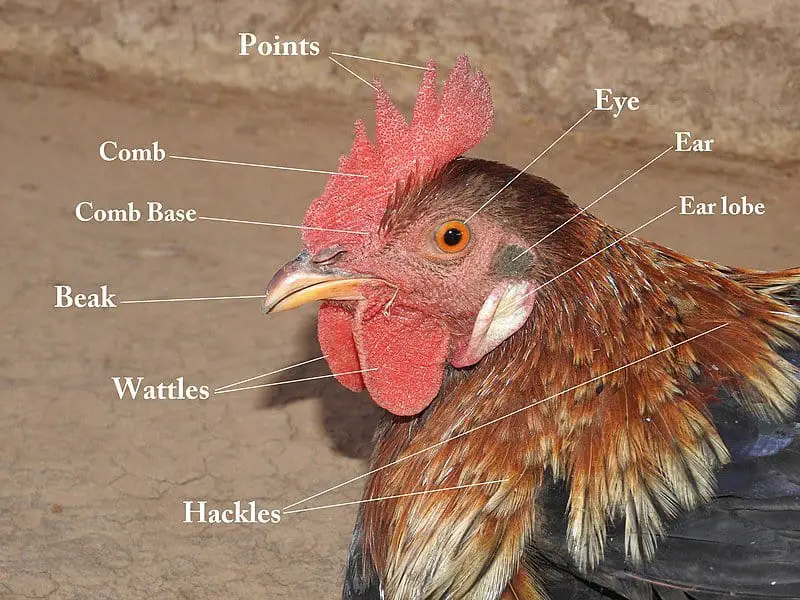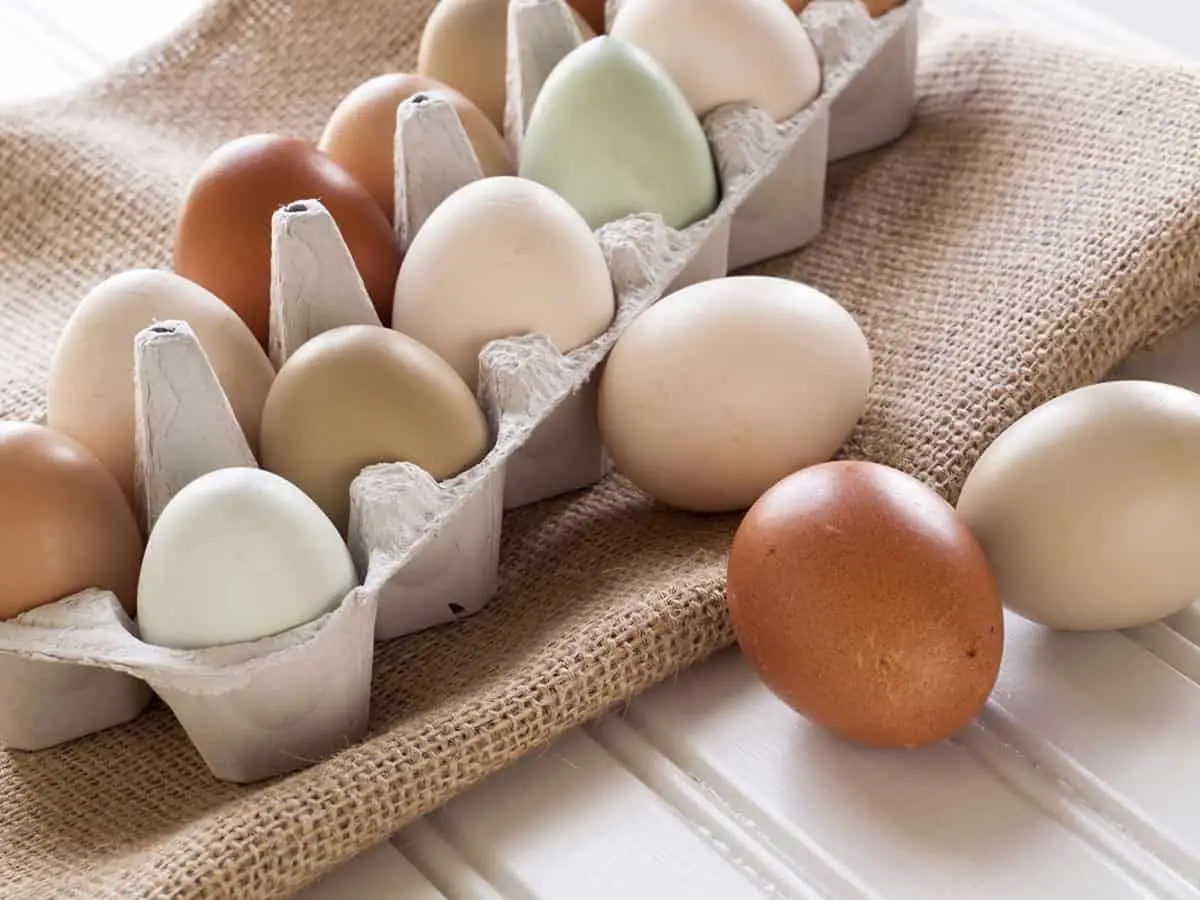Did you know that some chickens lay green eggs? In fact, eggs come in many different colors besides white and brown, including green, pink, speckled, and blue eggs. These colorful eggs are no different when it comes to nutrients, but their colorful looks make them more interesting to kids and adults alike.
The eggshells get their color in the chicken’s oviduct. The chicken breed plays a primary role in the color of the eggs. In addition, there are other ways to predict egg color.
If you are planning to add some green to your Easter basket or just want to add colored-egg laying chickens to your flock, then knowing which breeds that lay green eggs will certainly be helpful.
These chicken breeds are known to lay green eggs:
- Olive Egger
- Favaucana
- Isbar
- Easter Egger
Chickens are loved no matter what color of eggs they lay but finding a colored egg as you fill up your basket can make the whole endeavor fun and exciting. In any case, learning the science behind tinted eggs will help you pick the right breeds to add to your fluffy flock.
Table of Contents
What Chickens Lay Green Eggs?
These are chicken breeds you should look for when adding green layers to your flock.
Olive Egger
Olive eggers are a relatively new breed. It’s a mix of a blue egg-layer with a dark brown egg-layer; for instance, Ameraucanas with Marans or Legbar with Marans or Welsummers.
Depending on the mix, these chickens can have different personalities, for example, having Welsummer in the mix will usually result in more intelligent chickens.
Generally, Olive eggers are friendly and easy to take care of. They are also hardy birds and health issues will be rare. They can lay around 200 eggs per year. Their eggs have a beautiful olive-green tint, a great addition to your basket.
Favaucana
Favaucana is also a hybrid breed; a cross between Favriles and Ameraucanas.
Favaucana lay around five gorgeous sage-green eggs a week. They are known for being extremely friendly, calm, and sweet. Since they are part Ameraucanas, they have no difficulty making their place in the flock.
Isbar
Isbar, pronounced as “Ice bar”, is a rare and autosexing breed, and unlike other green egg-layers, these chickens are purebred.
Isbar hail from Sweden and can lay around 150 to 200 eggs a year. They lay eggs in various shades of green; from olive green to mint green.
They have a friendly demeanor and are usually very alert of predators. These birds with their metallic feathers make a beautiful addition to the flock.
Easter Egger
Easter Eggers are popular for being able to lay eggs in a variety of colors. It is not an actual breed but just chickens that are not purebred and lay eggs ranging from green to pink.
Easter Eggers lay around four large to extra-large, eggs per week owing to their non-broody nature. They are often mistaken for Ameraucanas but, Ameraucanas are not as commonly available.
Predicting Egg Color
There is a way to predict egg color, but the predictions are only about 75% accurate.

Chicken’s earlobe color is one way of determining if you will get colored eggs.
If the earlobe is red, the chicken will most likely lay brown eggs. If it is white then it will probably lay white eggs.
But there are certainly exceptions. For example Empordanesas which have white earlobes but they lay brown eggs. Silkies have blue earlobes, but they lay brown or white eggs. Because of these exceptions, this method is not 100% accurate but will still do the trick most of the time.
You may be wondering how earlobe color is related to egg color. The color of earlobe and eggs is surprisingly determined by the same gene.
Many Shades of Green
The beauty of colored eggs is that they come in a range of shades. These shades depend on the breed, age, diet, and even stress levels of the chicken.
Two chickens of the same breed may lay different shades of green eggs; older chicken may lay eggs in a lighter tone of green.
Crossbreeding a breed that lays dark brown eggs with chickens that lays pale blue eggs will give dark olive shade to eggs. It is almost like mixing colors in a palette – fascinating, isn’t it? The different depths of pigmentation only make the egg basket prettier.
Nutritional Difference
It should be emphasized that the color of the egg does not determine its nutritional value or taste. Green eggs will look good in the basket but they do not taste better or have a higher amount of protein.
All eggshells are made of calcium carbonate and are white in the beginning and green is merely a tint on the eggshell. There are other factors like egg size and hen’s diet that may contribute to a difference in nutrition, but the color is not one of them.
What to Do with the Green Eggshells?
If you get your hands on a few green eggs, you may be reluctant to just toss the eggshells into the trash can. There are fun ways to use these eggshells like using them in a craft project.
Children would love making mosaic paintings with some green eggshells so if you do not want to grind the eggshell but want to use the pigment to your advantage, a fun craft project will help you achieve that.
The Science Behind Green Eggs
We are accustomed to seeing white eggs in our baskets therefore green, brown, blue eggs are fascinating to see and pique our curiosity. Surprisingly, all eggs start off as white, and in the last five hours of egg formation, they get their various colors. In the first 20 hours of formation, the egg is formed along with its white eggshell then the pigment is deposited on it in chicken’s oviduct. Different pigments are added at different stages of eggshell formation therefore the exterior and interior of the shell can vary in color.
Brown and white eggshells have a white interior lining, whereas blue and green eggs have a blue interior. This difference between exterior and interior color will help you understand the science behind green eggs. Brown pigment called Protoporphyrin is deposited on egg later in the formation process hence it does not permeate the eggshell whereas a blue tint called Biliverdin is deposited early in the process and seeps into the shell making it blue on the inside.
The process of green egg formation is rather peculiar because the green shade is actually created by mixing blue and brown together. When chickens that lay blue eggs are crossbred with those that lay brown eggs, we get green egg-laying chickens. Green eggs are blue on the inside but green on the outside because brown pigment overlays the blue exterior but does not affect the interior color.
Some Final Words
Now you are ready to make an informed decision and add some color to your egg basket this spring. Consider the chicken breeds’ disposition before adding chickens to your flock and make sure that they have a good diet; a good chicken diet means healthier eggs! In the end, do not forget to have some fun with the green eggshells and do a cool arts and craft project.


